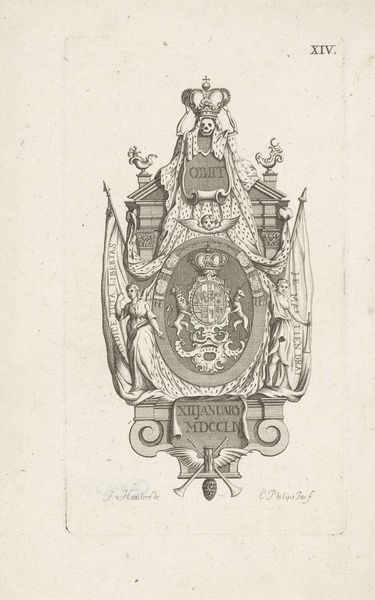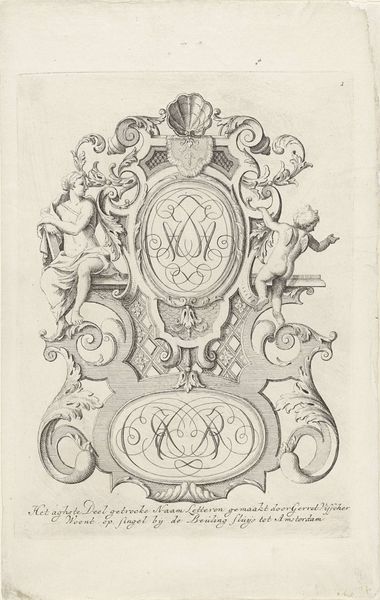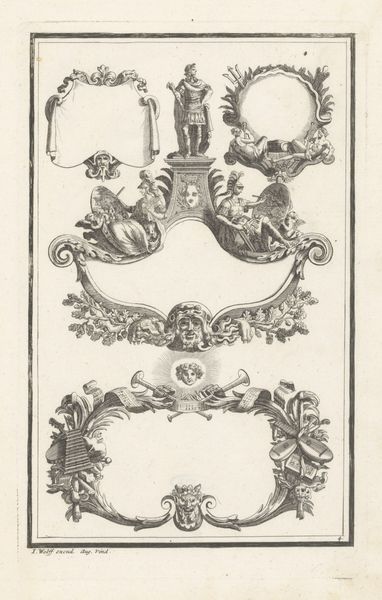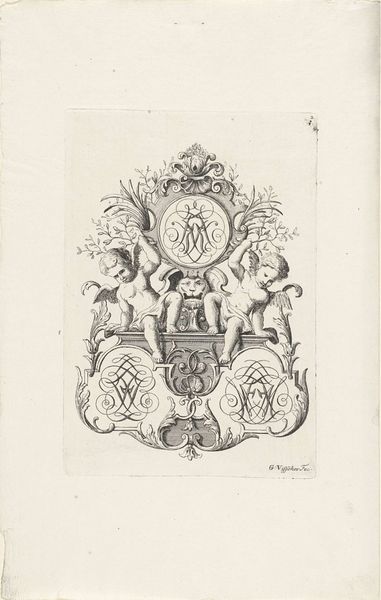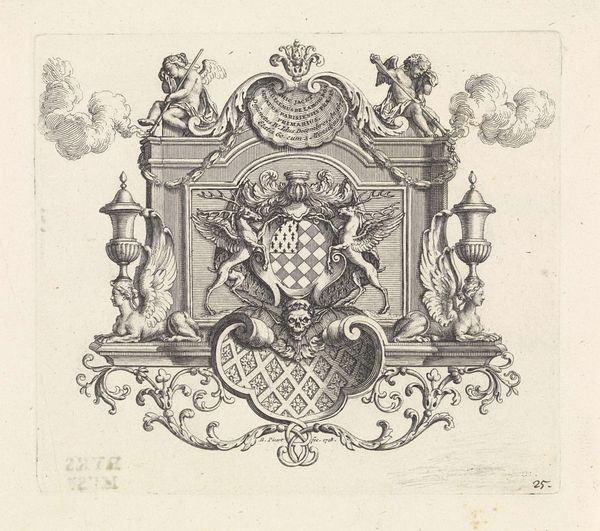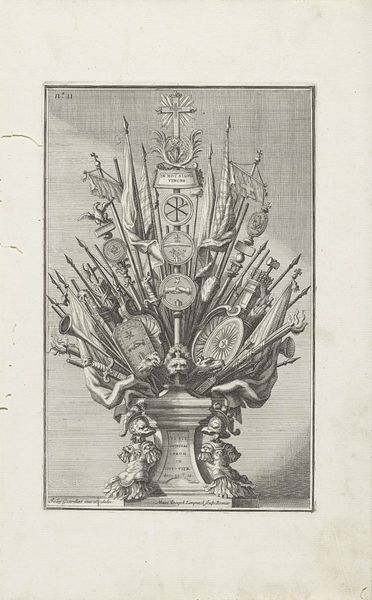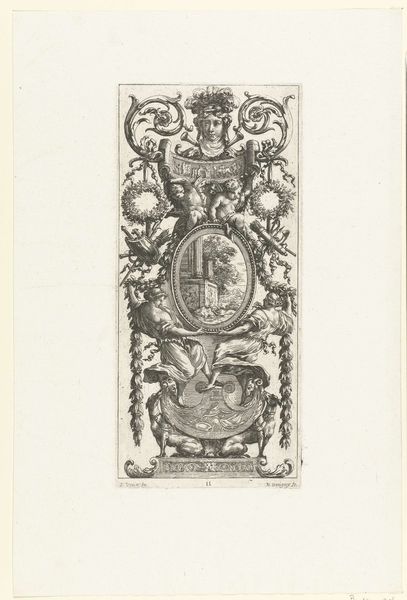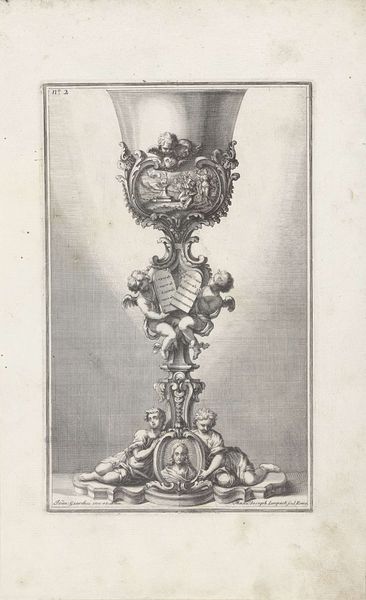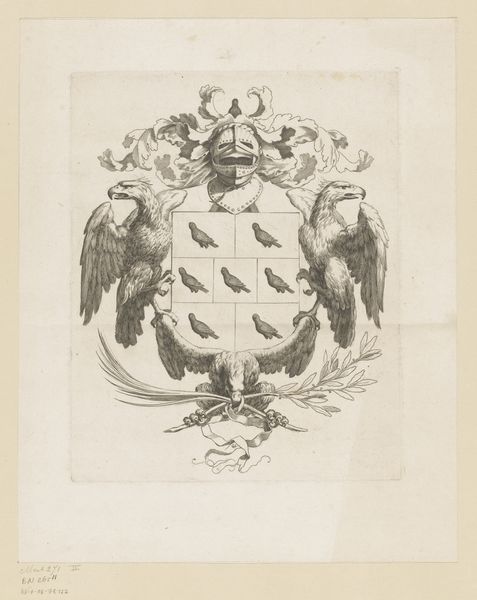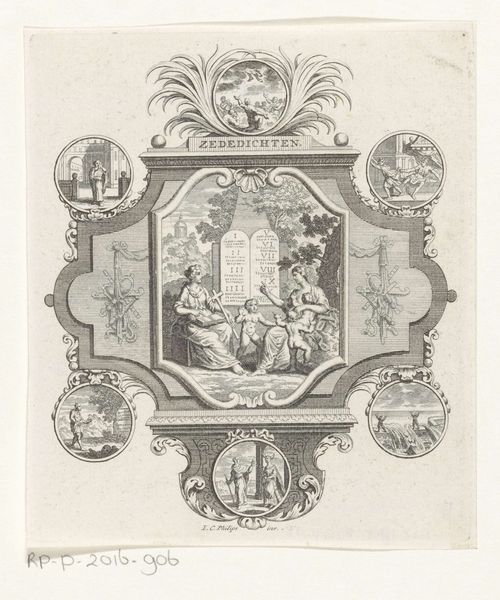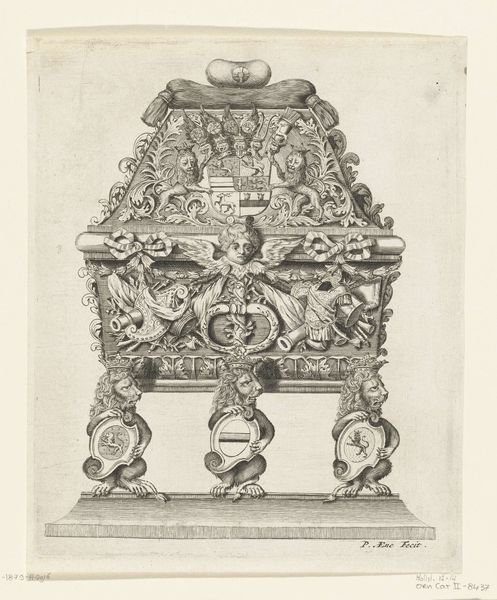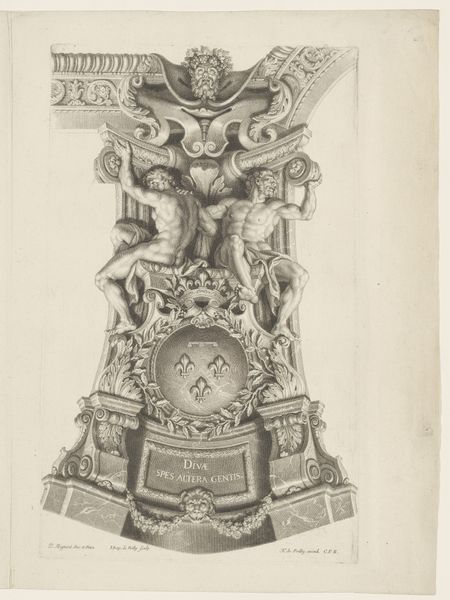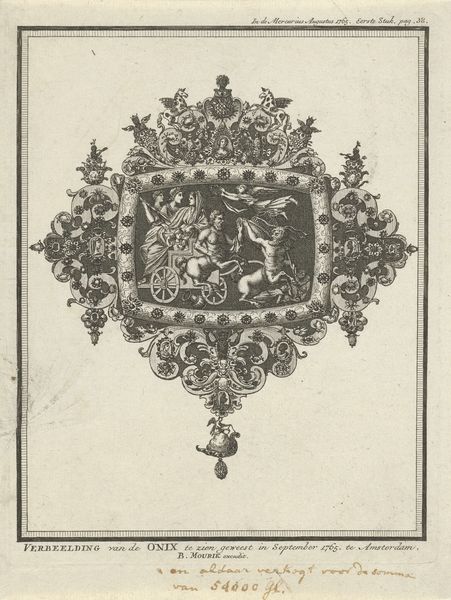
Dimensions: height 175 mm, width 97 mm
Copyright: Rijks Museum: Open Domain
Curator: Ah, the "Epitaph for the late Prince William IV," dating from between 1752 and 1789, created after his death in 1751. Caspar Jacobsz. Philips crafted this intricate piece. I see it primarily as an engraving. Editor: Intricate indeed! It's giving me serious Baroque drama, but in miniature. It’s somber, obviously, but also… celebratory? Is that just the flourish of the lines? Curator: Well, it's an epitaph, so it memorializes the prince, but as a print, consider its production. These engravings were reproducible, distributed. Think about the act of memorializing a leader like that. The coat of arms at the heart of the piece is held up by rampant lions – and what does it signify in the context of Dutch trade routes and power? What statement is this epitaph making about the social context of his rule, about colonial ambitions, the naval trade? Editor: That's a cold reading to it - that death of a ruler would come with trade considerations as the core subject matter. Curator: But the image is the power. How that’s distributed. That influences the markets! These allegorical figures flanking the epitaph proper—justice, strength, piety—what labor underpinned their portrayal? Philips wasn't just spontaneously creating; the circulation of wealth enabled this work, supported his process. What statement are we making, in turn, exhibiting the physical legacy of what was purchased as grief? Editor: Okay, that's really fair. From my perspective, I was zeroing in on the date, "OBIT XXII OCTOBRIS MXCCLI"-the date of his death as it’s enshrined in the engraving. The symbolic weight—the crossed swords at the base, the figure on the helm above the lettering, and the fact that it’s presented to look almost architectural… it suggests enduring power to me. Curator: It literally monumentalizes him - that architectural context! These forms influence and drive production further. It reminds me so clearly of the elaborate rituals surrounding funerals and social power back then. Editor: It makes me think that maybe the intention wasn’t purely mourning but solidifying the image of leadership after his death. Food for thought about that time. It all works together, right? Curator: Indeed. Thank you for bringing that interpretation to the forefront! I keep getting snagged in how materials change hands and processes interlink in shaping that perception in art history. Editor: Haha. As for me, I guess it comes down to that raw feeling an artwork kicks up in your chest... Thank you!
Comments
No comments
Be the first to comment and join the conversation on the ultimate creative platform.
